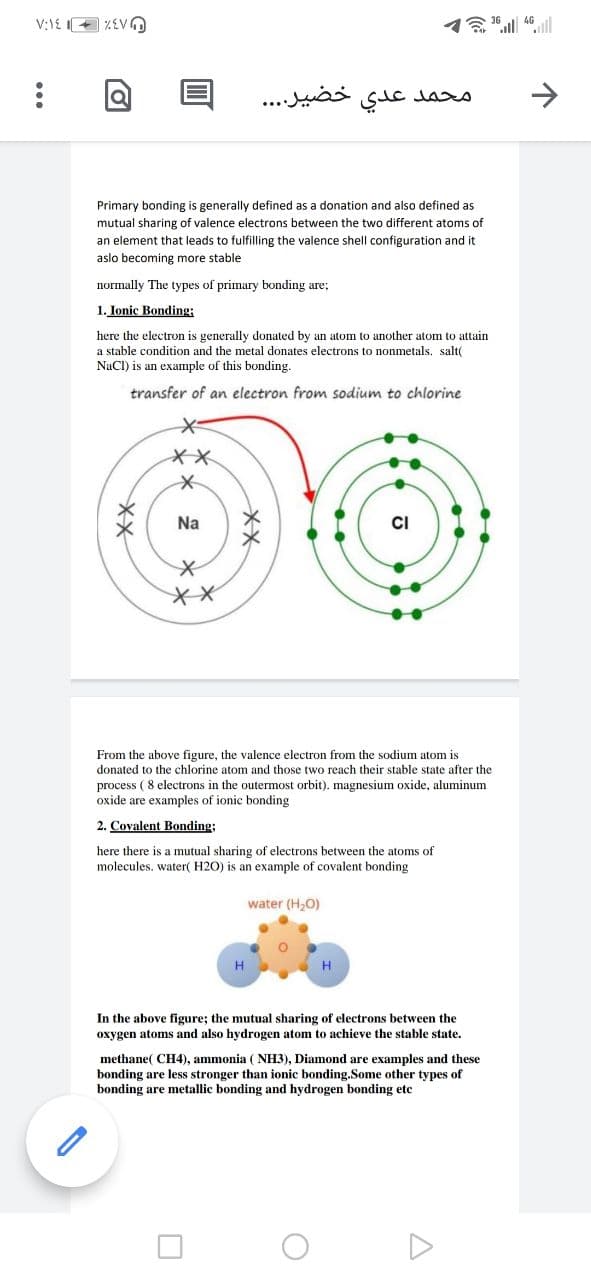Primary bonding is generally defined as a donation and also defined as mutual sharing of valence electrons between the two different atoms of an element that leads to fulfilling the valence shell configuration and it aslo becoming more stable normally The types of primary bonding are; 1. Ionic Bonding: here the electron is generally donated by an atom to another atom to attain a stable condition and the metal donates electrons to nonmetals. salt( NaCI) is an example of this bonding. transfer of an electron from sodium to chlorine Na From the above figure, the valence electron from the sodium atom is donated to the chlorine atom and those two reach their stable state after the process ( 8 electrons in the outermost orbit). magnesium oxide, aluminum oxide are examples of ionic bonding 2. Covalent Bonding: here there is a mutual sharing of electrons between the atoms of molecules. water( H2O) is an example of covalent bonding water (H,0) In the above figure; the mutual sharing of electrons between the oxygen atoms and also hydrogen atom to achieve the stable state. methane( CH4), ammonia ( NH3), Diamond are examples and these bonding are less stronger than ionic bonding.Some other types of bonding are metallic bonding and hydrogen bonding ete Xx
Formal Charges
Formal charges have an important role in organic chemistry since this concept helps us to know whether an atom in a molecule is neutral/bears a positive or negative charge. Even if some molecules are neutral, the atoms within that molecule need not be neutral atoms.
Polarity Of Water
In simple chemical terms, polarity refers to the separation of charges in a chemical species leading into formation of two polar ends which are positively charged end and negatively charged end. Polarity in any molecule occurs due to the differences in the electronegativities of the bonded atoms. Water, as we all know has two hydrogen atoms bonded to an oxygen atom. As oxygen is more electronegative than hydrogen thus, there exists polarity in the bonds which is why water is known as a polar solvent.
Valence Bond Theory Vbt
Valence bond theory (VBT) in simple terms explains how individual atomic orbitals with an unpaired electron each, come close to each other and overlap to form a molecular orbital giving a covalent bond. It gives a quantum mechanical approach to the formation of covalent bonds with the help of wavefunctions using attractive and repulsive energies when two atoms are brought from infinity to their internuclear distance.

Trending now
This is a popular solution!
Step by step
Solved in 2 steps with 1 images









